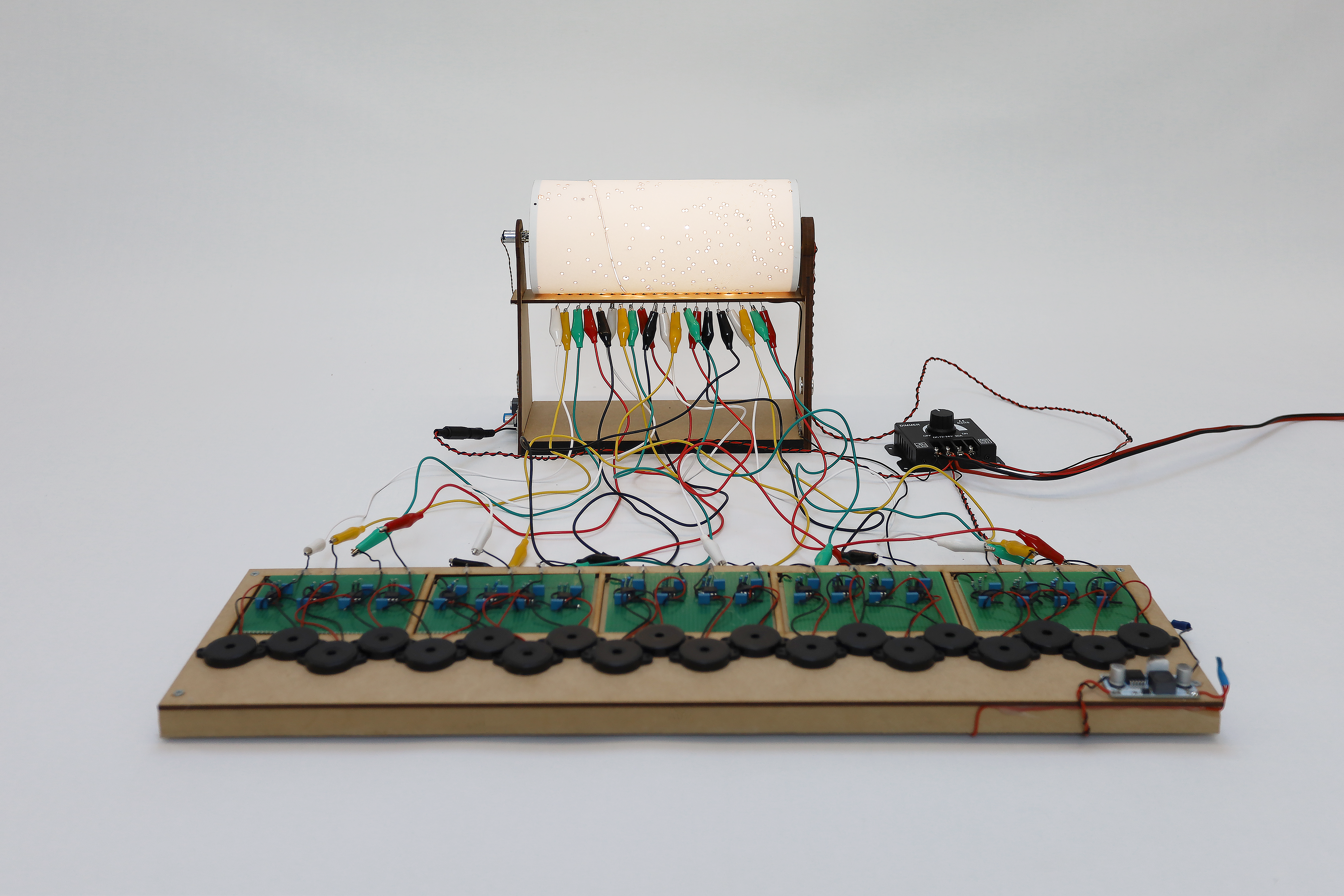Vanitas Machine
Verena Friedrich
Installation
This installation features a lighted candle which sits under a glass bell in the center of a laboratory designed to keep the fire alive. In a controlled atmosphere, by limiting the oxygen that the flame consumes to burn, the artist artificially prolongs the lifespan of the object.
Thus, Vanitas Machine expresses the desire for eternal life, it is an allegory of the efforts one makes in order to prolong existence. But is death inevitable? Here, Verena Friedrich recalls one of the first theories of slowing aging: the rate-of-living. This claims that the faster an organism’s metabolism, the shorter its lifespan. By slowing it down as much as possible, it would therefore be possible to delay death.
In this representation proceeding by analogy, the candle and the glass bell refer to recurring symbols of vanities which evoke death, the passage of time, the emptiness of passions and the futility of human activities. Through the use of these codes, the work portrays the transient nature of existence and suggests the tension that links it with this desire to be kept alive at all costs.


Share this event on social networks
Artist
Verena Friedrich (GER)
Verena Friedrich is an artist creating time-based installations in which organic, electronic and sculptural media come into play. She was an artist in residence i. a. at “SymbioticA – Centre of Excellence in Biological Arts” at the University of Western Australia and at the Max Planck Institute for Biology of Ageing Cologne in Germany.
Verena Friedrich´s projects have been presented internationally in the context of exhibitions, media art festivals and conferences. She received the International Media Award for Science and Art from ZKM Karlsruhe 2005; a special mention in the VIDA 13.2 Art & Artificial Life Awards; an honorary mention in the Prix Ars Electronica 2015; a jury mention in the Japan Media Arts Festival 2015 and the Transitio_MX award in 2017.
In recent years she has been teaching at the University of Art and Design Offenbach and the Bauhaus University Weimar, both in Germany. Currently she’s an assistant professor and co-heading the ‘exMedia Lab’ at the Academy of Media Arts Cologne, Germany.
Credits & mentions
Technical realization in collaboration with Lab3, Laboratory for Experimental Computer Science, KHM.
Support from the Academy of Media Arts, Cologne.
Warning: Undefined variable $oeuvresLieesIds in /home/clients/6cd874e1a9c3606a339242af6d0db3da/sites/chroniques-biennale.org/wp-content/themes/biennale-2024/single-oeuvre.php on line 49


